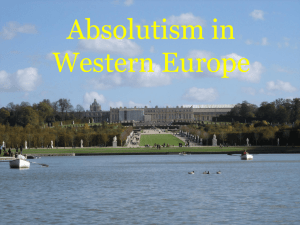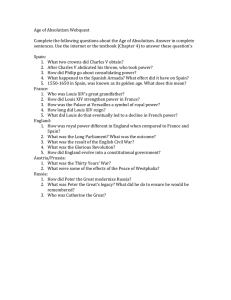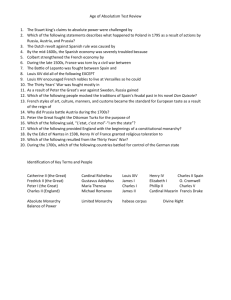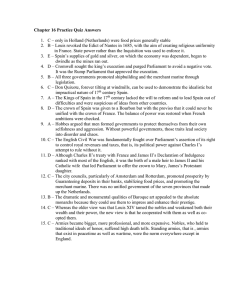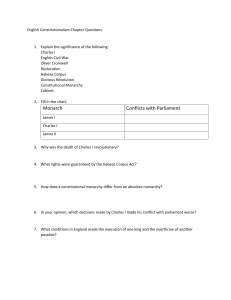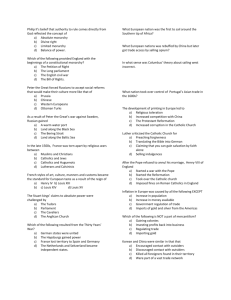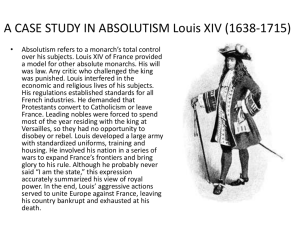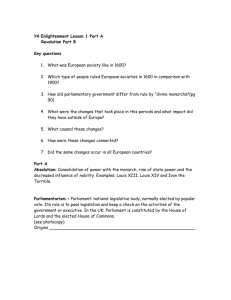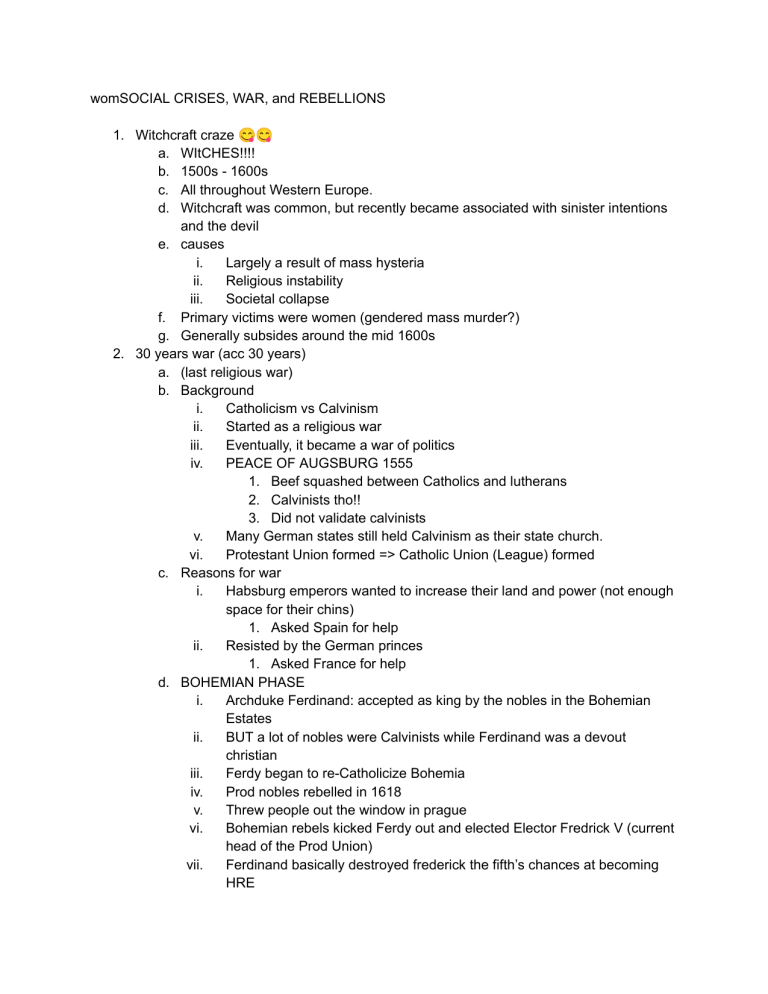
womSOCIAL CRISES, WAR, and REBELLIONS 😋😋 1. Witchcraft craze a. WItCHES!!!! b. 1500s - 1600s c. All throughout Western Europe. d. Witchcraft was common, but recently became associated with sinister intentions and the devil e. causes i. Largely a result of mass hysteria ii. Religious instability iii. Societal collapse f. Primary victims were women (gendered mass murder?) g. Generally subsides around the mid 1600s 2. 30 years war (acc 30 years) a. (last religious war) b. Background i. Catholicism vs Calvinism ii. Started as a religious war iii. Eventually, it became a war of politics iv. PEACE OF AUGSBURG 1555 1. Beef squashed between Catholics and lutherans 2. Calvinists tho!! 3. Did not validate calvinists v. Many German states still held Calvinism as their state church. vi. Protestant Union formed => Catholic Union (League) formed c. Reasons for war i. Habsburg emperors wanted to increase their land and power (not enough space for their chins) 1. Asked Spain for help ii. Resisted by the German princes 1. Asked France for help d. BOHEMIAN PHASE i. Archduke Ferdinand: accepted as king by the nobles in the Bohemian Estates ii. BUT a lot of nobles were Calvinists while Ferdinand was a devout christian iii. Ferdy began to re-Catholicize Bohemia iv. Prod nobles rebelled in 1618 v. Threw people out the window in prague vi. Bohemian rebels kicked Ferdy out and elected Elector Fredrick V (current head of the Prod Union) vii. Ferdinand basically destroyed frederick the fifth’s chances at becoming HRE e. DANISH PHASE i. King Christian IV of Denmark 1. Lutheran 2. Leaded an army into northern Germany, 3. anti-Habsburg and anti-Catholic alliance w/ united provinces and England 4. Wanted to gain land for him too ii. Ferdy 1. Got a phenomenal commander (Wallenstein) 2. Wallenstein’s force ended Danish supremacy in the Baltic. iii. Diff ferdy (Emperor Ferdinand II) 1. Edit of restitution 1629 a. Calvinist worship = prohibited b. Restored all property taken by Protestant princes to the Catholic Church 2. Huge gain of power by the Habsburg emperor 3. German princes forced the emperor to dismiss Wallenstein f. SWISS PHASE i. Gustavus Adolphus 1. Military Genius 2. King of Sweden 3. Devout Lutheran 4. Came to help the other Lutherans ii. Had great success in fighting until Gustavus was killed at the Battle of Lutzen in 1632 iii. Wallenstein was killed in 1634 iv. The imperial army forced the Swedes to retreat v. Emporer agreed to annul the Edit of Restitution of 1629 vi. Swedes were out for blood and the French also wanted to fight g. THE FRANCO-SWEDISH PHASE i. 30 yr war truly is not religious (catholic french with prod Swedes) etc ii. End of Spanish military greatness iii. Peace of Westphalia in 1648 ended war in Germany iv. Peace of the Pyrenees in 1659 ended the war between France and Spain v. Spain = second class LMAO vi. France = dominant in Europe h. Outcomes of war i. political 1. Religion and politics = are completely separated 2. Politics became guiding forces for public affairs 3. The beginning of a modern international order ii. Societal 1. General devastation throughout Germany 2. Some parts flourished, but mostly bad 👉👈 🙁 3. Most destructive conflict yet 3. Revolution of the military a. Military = rulers reputation and power b. Medival warfare (mounted knights and archers) => Infantry armed with pikes and halberds c. Gustavus Adolphus i. Army of conscripts, notable for the flexibility ii. Layered army iii. Very effective d. “Miltary revolution?” i. Could be argued that military development was gradual e. Either way,development was quick and consistant f. Smarter, better trained soldiers and etc. 4. REbellions a. Many rebellions from the lower classes occured during this time of the 30 yr war. b. Stability of governments struggled c. (ENGLISH REVOLUTION) (BIG DOG) Absolutism??? Whoaa 1. French Absolutism a. Louis XIV i. Best example of absolute monarchy ii. Largly imitated by the rest of europe iii. Before louis, huge instability b. Before absolutism i. The line between order and anarchy was thin ii. Louis 13th and 14th both were young children when they received the throne iii. Government was dependent on royal ministers iv. Thankfully, they were competent v. Slow strengthening of the monarchy vi. Quietly executed conspirators vii. Cardinal Richelieu 1. Strengthened royal authority 2. Tax on land or property increased rapidly 3. Public image of him was pretty bad 4. Lot of pushback from the people when he tried to institute reforms (they benefited from the broken system. 5. French debt spiraled c. Cardinal Mazarin i. After Richelieu died ii. Dominated gov while Louis XIV yk, lived a childhood iii. Foreigner iv. v. vi. vii. viii. Overall disliked by French population Also hated his centuralized administration New taxes for the 30 yr war Frond 1: 1. People hated his increasing taxes 2. Revolt of the nobles Frond 2: 1. Medeval nobility 2. Secure their own positions and increase power 3. Crushed bc everyone fought each other instead of Mazarin 4. Best hope for stability was the crown 2. LOUIS THE XIV!!!! a. Determined to be the sole ruler of France b. A little bit of a prankster c. Willing to sacrifice what is needed d. Louis’s court i. Standard for monarchies and aristocracies all over Europe e. Despite the efforts of Cardinals Richelieu and Mazarin i. France still is very complicated and strange ii. Overcomplicated system and overlapping powers iii. Towns and provinces would not relinquish these powers f. Administration of the Government i. Restructured by Louis ii. Royal court; city of Paris at Versailles 1. Basically the powerhouse of the French gov 2. Governmental machinery 3. Powerful people flocked here to get favors or offices iii. High nobles and princes of the blood were elimanated by being removed from the royal council iv. Louis held control of policy making machinery of the gov v. Louis’s powers 1. Making of war and peace 2. Assertion of secular power against any religious authority 3. The ability to levy taxes vi. Less success through internal administration of the kingdom vii. Local officials didnt enforce the laws they saw as unjust g. Religious policy i. Religious harmony= monarchial power ii. Louis fought with Huguennots iii. Louis did not want Protestants to practice their faith. iv. “One king, one law, one faith” v. Hugennots undermined his own political authority. vi. EDICT OF FONTAINEBLEU 1. Revoked edict of nantes, 2. Destruction of Huguenot churches and closing of prod schools vii. Result of FONTAINEBLEU 1. Hugeunots sought asylum in England and Germany 2. Could have weakened the French economy, a. A bunch of English and Irish people also went to France (offset losses) 3. French people went full sicko mode on protestants (not good) h. Financial Issues i. VERY EXPENSIVE ii. Very fortunate to have JEAN-BAPTISTE COLBERT!!! iii. Adhered to mercantillism 1. Stressed gov regulation of economics iv. Colbert founded… 1. Royal tapestry works 2. Venetian glass 3. Flemish clothmakers v. Regulations were often evaded vi. Foreign retaliation from high tariffs. vii. French too late to beat ENglish and DUtch viii. Louis spent way too much money ix. Heavy taxes fell on peasents i. Court of Versailles i. Rich rich rich ii. Honor to cloth louis iii. Louis held all the power to gain offices, and titles etc iv. Court etiquette became quite complex. 3. THe decline of Spain a. Beginning of 17th century spain = most populous empire i. Controlled all of SA and settlements in Asia and Africa b. Seen as the greatest power, but had no money c. Excessive spending by Philip the II and Philip the III d. Philip the III i. Crucial issues for the country went unsolved e. Philip the IV i. Hope for revival ii. Very capable chief minister Gaspar de Guzman iii. Tons of efforts to centralize the government of spain iv. Little success v. 30 year war 1. Devestatinly expensive for spain 2. Also lost pretty badly 3. This and the revolts in spain ended any thoughts about spain being great 4. ABSOLUTISM IN CENTRAL, EASTERN, and NORTHERN EUROPE a. German states i. Peace of Westphalia 1. Left each (of the many) states autonomous and sovereign 2. 3 hundred little germanies 3. 2 emerged as great european powers ii. Brandenburg-Prussia 1. Hohenzollern dynasty a. In 1415, ruled the insignificant principality in northeastern Germany b. 1609, inherited lands in the Rhine valley (western Germany) c. later , received east prussia, d. THESE 3 MASSES WERE DEEMED the Brandenburg-Prussia 2. Frederick William the Great Elector ( 1649-1688) a. Foundation of Prussia i. Strong and effective standing army 1. 40,000 by 1678 2. General War Commissariast to get taxes for the army and oversee it 3. Soon evolved into an agency for civil gov ii. Deal with nobles =>nobles get unlimited power ofer their peasants, no taxes, and the highest ranks in the army for Fredrick’s free hand at the government 1. Nobles supported this iii. Serfdom is restablished iv. Mercantilist policies for economy b. Son of the elector, Fredrick the III, transformed into Fredrick I, King of Prussia iii. Austria!!! 1. Austrian Habsburgs( literally everywhere) 2. Leopold I a. Encouraged eastward expansion of Austria b. Challenged by ottomans c. Defeated Ottomans and using the Treaty of Karlowitz (1699) Austria took control of Hungary, Transylvania, Croatia and Slovenia 3. Never became an absolutist state, because of the amount of different national groups. 4. Strong empire by the beginning of the 18th century b. Italy: spanish to austria i. By 1530, Charles V beat Frenchies in italy. ii. Originally content, iii. Gave duchy of Milan to his son Philip II, took imperial rights iv. Spanish was felt everywhere in Italy v. Papacy was stronger than ever vi. Counter ref, the inquisition, the index and jesuits vii. Austria later takes this land c. RUSSIA i. Peter the great!!! 1. Accelerated westernizing process 2. Reorganized+created navy 3. Reorganized government to mimic western govs 4. Senate didnt work so adopted “colleges” 5. All landholders serve in military or civil offices 6. Adopted mercantalist policies a. Put burdan on peasenets i. Peasents very oppressed in Peter’s russia 7. Control over Russian Orthodox Church ii. Western costoms? 1. Manners a. First Russian book of etiquette 2. Cutting of beards and coats 3. WOMEN!!!!! YAYAYAYAY a. Mixed genders in court b. Women dont have to wear face-covering veils c. Held 3 social gatherings a week for mixed gender mingling d. Women coud marry of their free will iii. Sweden? 1. Peter attacked Sweden for Baltics 2. Lost, but bounced back 3. Peace of Nystadt = Russia great European power recognition d. The DANES i. Washed ii. Little expansion success iii. Elected monarchs 1. Kings shared power with nobles and had strict control over their peasants iv. War losses 1. Unable to rule Baltic and constitutional crisis a. Chrisis i. Denmark estates passed bloods rev in 1660 ii. Absolutist constitution 1. Centeralized with nobles as chief e. SWEDES i. Weak economy, monarchy in conflict with nobles ii. Reign of Gustavus Adolphus 1. Wife persuaded him to adopted policy = nobility “First Estate” in bureaucratic (central + expanded) gov positions -> stable monarchy and king free to raise army for Thirty Years’ War 2. Death of Adolphus -> daughter took over iii. Reign of Christina 1. Favored interest of nobility -> protests from other estates of the Riksdag 2. Tired of ruling and wanted to become Catholic (which was illegal in Sweden) -> resigned to cousin King Charles X iv. Reign of King Charles X 1. Charles to throne -> defused potentially explosive peasant revolt vs nobility 2. Reestablished domestic order v. Reign of Charles XI 1. Built the Swedish economy as absolute monarchy 2. Retook control of crownlands and money attached to them -> weakened noble power 3. Built up bureaucracy, put down Riksdag and church, improved army vi. Reign of Charles XII 1. Interest in military affairs -> Sweden’s downfall 2. Lost most of Sweden’s empire to Russia -> no longer first class power f. Ottoman empire i. What are they currently doing 1. Sultan Suleiman -> Turks are finally back 2. Seized Belgrade, Hungry, failed to seize Vienna 3. Expanded to mediterranean -> spanish realiated and destroyed fleet at Lepanto a. Held southern mediterranean shores 4. Janissaries -> added strength 5. Laid siege to Vienna (again) a. Pushed out of Hungary by European coalition b. Ottomans fell off. ii. How was the empire 1. Treated like a European power 2. Good government and well trained 3. Sometimes bloody, fought for the throne 4. “Sleeping giant” g. The Limits of Absolutism i. Monarchial powers? 1. Not even close to absolute 2. Most policies would have to be enforced by local agents ( no guarantee it will be enforced) 3. Landowners and general public limited the absolutism of monarchs. 4. Successful rulers knew how to use the advantage of the old system (Louis XIV) 5. THE WEAKNESS OF THE POLISH MONARCHY a. Polish-Lithuania?? i. Lithuanian prince + Polish queen ii. Largest kingdom of Christendom 1. Big role of 15th century 2. Ruled most of Ukraine iii. MORE SERFDOMMMM???? b. Downfall? i. Lithuanian Dynasty END - outsider kings chosen ii. Swede Sigsmund III elected 1. Attempts to expand Polish Empire to include Russia and Sweden iii. Elective Nature -> Polish Downfall 1. Sejm (diet of landowners and shared power) a. Downfall of monarchy bc the people did not want monarchial authority. 2. Poland = semi-indepenent land of nobles a. Easy to invade 6. THE GOLDEN AGE OF THE DUTCH REPUBLIC a. DUtch republic i. GREAT EUROPEAN POWER ii. Revolution in 16th cen 1. United provinces became core of Dutch state a. Peace of Westphalia recognized this new state in 1648 iii. Indepencence === Internal Dissension 1. Republican vs monarchial 2. War == monarchial, 3. No heir == officially republican iv. Dutch Trade 1. Absolute bank all the time 2. Wars kinda broke the economy down tho b. LIFE IN AMSTERDAM i. Urban cities expanded bc of Spansh-Netherland refugees ii. Trade and commercial center 1. Amsterdam based ships 2. Principal supplier of military goods iii. Finantial center = bank of Amsterdam and Amsterdam Stock Exchange 1. For speculating in commodities iv. Manufacturers and merchants 1. VERY IMPORTATNT 2. Their money controls the government v. Began to stray away from Calvinists vi. Simple, clean lifestyle + dull clothes 7. Engliand and hte Constitution a. JAMES i. Believed in divine right of kings 1. Alienated parliament 2. Got refused funds ii. Refused Puritan suggestion iii. Anglican church supported the monarchy more 1. ALIENATED PARLIMANT AGAIN???!?!??! 2. (stupid) 3. AND PURITANS 4. Puritans had a lot of power b. Charlie barley i. Passed parliaments Petition of Right 1. Then rejected, interfered with absolute monarchicial power ii. NEVER CALLED PARLIAMENT 1. Needed to find a new way to tax a. Used ship money (people, big no no) iii. REligion 1. Married Catholic princesses 2. More ritual to Anglican church 3. Impose book of common prayer on Scottish pres church a. Fear of Catholocism, b. Scots revolted 4. Finally called Parliment a. Not enough money to fight Scots iv. Parliament limited royal power 1. Triennial act a. Meet once every 3 years b. Radical group eliminated bishops in ANglican church v. Attempts to arrest parliament members 1. ENLGIHS IVNEOFKL AR c. ENGLISH CIVIL WAR??!?!??!?!?!??!!??!?!?!?!?!?!?!?!?! i. Parliament vs England 1. Phase 1 a. Parliament captured carles b. Won this phase c. Creation of new model army (big success) (fought for god) 2. Split in Parliament a. Presbyterian majority wants to restore CHarles I b. Began negotiations c. Charles fled to seek help 3. Cromwell started phse 2 😭 ii. iii. iv. v. 4. PHASE 2 a. Captured charles again b. Presbytarian memebers of parliament eliminated c. Small parliament now d. Monarchy destroyed e. Republic CROMWELL 1. Ended parliament 2. Military government with him on top, instrument of gov = England’s first and only constitution 3. Crushed revolutions (ireland and scotland) 4. Smashed radical groups forcefully 5. Monarchy restored when he died(charles II) MONARCHY IS BACK 1. Parliemant maintained power 2. New Cavalier parliament restored ANglican Church and forced everyone to convert a. Charles + brother were catholics 3. Test act of 1673 a. Only anglicns could hold office 4. Dismissed Parliment when they tried to tamper with successor, to prevent James from getting throne a. WHIGS WANTED JAMES GONE. 5. James continued Catholic interests a. Religion was the biggest dispute between King and Parliament 6. James made it law to not be hateful towards catholics/puritans GLORIOUS REVOLUTION 1. Parliament said James broke constitutional 2. Throne of england empty 3. They accepted this role along with THE BILL OF RIGHTS!!!(1689) a. Rights that the king could not interfere with. 4. Toleration act of 1698 a. Puritans had freedom to worship publicly b. No freedom for catholics 5. Ended struggle between Kings and Parlieamnet, England toward secular RESPONSES 1. Thomas hobbes a. People will always be war at eac other b. Humans are greedy, cruel and selfish c. Governments should have one leader i. Absolute monarchy d. Gov deserves human rights 2. JOHN LOCK a. People live in a state of freedom rather than war. b. People are reasonable c. Several different leaders d. (similar to AMERICA) CAWWWWW e. democracy , no divine right f. People’s rights should be natural 8. CHANGES IN ART a. Mannerism i. Revival of religious values 1. Anxiety, suffering etc ii. Characteristics: Elongated contorted figures, distorted rules of proportion, iii. Started in Italy iv. El Geco 1. Church painter 2. Best portrayed mannerism b. Baroque i. post -mannerism, embraced by cathollics 1. Resisted in countries ii. Mix of renaissance and spiritualism iii. Dramatic effects, EMOTIONAL, motion, nude, lighting iv. Peter Paul Rubens = painter 1. THe landing of Maris de’Mediciat Marseilles v. Gian Lorenzo Bernini = architect 1. Ecstasy of Saint Teresa vi. Artemisia Gentileschi 1. Dramatic rendering of biblical scees c. French Classicis i. Emphais on high renaissance 1. Simplicity, balance, harmony of design, clarity 2. France = orderly ii. Less emotion than Baroque d. Dutch Realism i. Neither baroque nor mannerist ii. Success in money 1. A lot of wealthy people who could and did commission artwork iii. Realistic, colofrul, Depicted everyday life activities, often portraits. iv. Realistic portrayal of everyday, secular life v. Interests of wealthy people vi. Judith Leyster 1. Women who displayed these belief vii. Rembramt van rijn 1. Finest product of Golden Age Dutch painting 2. Refused contemporaries 3. Biblical paintings later 9. Elizabethan era a. Shakespeare?? i. Showcased pride of England ii. Created plays that rich and poor people could appreciate iii. Insightful on human psychology b. Lopa de Vega i. Golden age of Spain ii. Brilliant playwright iii. $$$$ c. FRANCE?? i. Elite audience ii. Clever polished and correct plots iii. Inspired by classical antiquity iv. Tragic dimensions of life v. Jean Baptiste 1. Racine - Greek/roman inspo, conflicts between emotions 2. Molieres- Satires, ridiculed religious hypocracy (protected by Louis)
